In 2020, Everett Burrell shared insights into the visual effects for the second season of The Umbrella Academy. He later worked on the third season and returns today to discuss his contributions to the final season of our beloved dysfunctional family.
How did you organize the work with your VFX Producer and amongst the VFX Studios?
The first step was to read as many scripts as possible that were released to the VFX department. We had 5 out of 6 scripts when I came onboard in mid-December, of 2022. Then working with our VFX producer, Sabrina Arnold. We started breaking down each script and roughly plotting out which episodes and which scenes would be best for each VFX company. We have very good relationships with many of the VFX companies from the past 3 seasons. So, we started some early conversations with SPIN VFX, FOLKS VFX, MARZ VFX and COSA VFX. Find out what their schedules were and capacity for the next 8 to 10 months.
How have the visual effects evolved from the first season to the final one?
I think we all try to be better every season, on all levels. A lot of people think we have tons of VFX money, because each season looks so good. But the reality is, we have always had a very tight budget that requires the VFX team to plan way ahead. Nobody likes surprises when it comes to budget and schedule challenges. Every season we try to add in money for look development on the superpowers to help make them a bit better every year. Season 4 was unique as all the superpowers for the family have been altered due to a bad batch of Marigold that was slipped into their Sake during episode 1. A few weeks were spent on developing these new looks early on. These tests helped the directors, actors and crew to understand what these new powers did. How to react both emotionally and physically to these new powers on set and location.
What role did previs and postvis play in planning and executing complex scenes?
Each director does storyboards for the most complicated action and effects scenes for their episodes. Once they are approved by the producers, then VFX breaks each shot down and decides which needs previs. For example, previs/techvis was required for a big scene in episode 6 that required 28 motion control passes of the character “Five” in a deli. This techvis was using a 3d model of the set and a full Maya rig for the Techno-Dolly. I would try a few different camera-moves in Maya and render them out. Show the director and the camera team to get approval. This was very valuable to help set up the camera, dolly track and show the actor the general idea of the scene.
Postvis played a huge part for the final battle with The Cleanse Monster in the department store. Once we got a scene the producer was happy with, we then turned over an HD quick time over to FOLKS VFX. They blocked out each creature shot in the scene so the editor could continue to refine the cut and make better story decisions. This was very valuable as we needed to get the VFX shot count down in this scene overall. The postvis helped all of us make the scene better by knowing what shots we could loose and which shots to help make the scene better. As dynamic as possible.
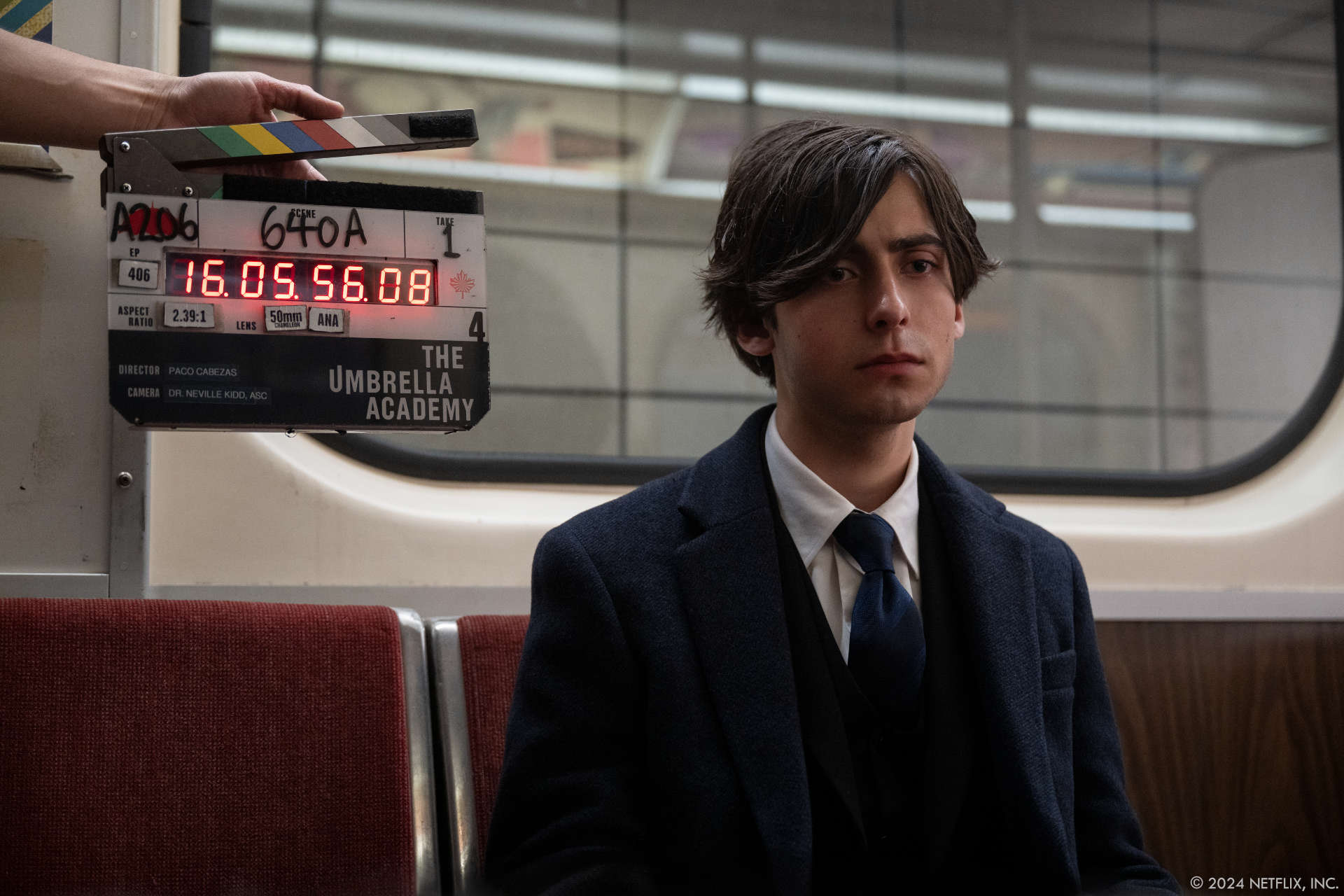
What were the biggest challenges in creating the visual effects for the last season?
The transformation of Ben and Jennifer into their various stages of infection by the combination of Marigold and Durango. We discussed various make-up effects options where VFX would help enhance. I pushed hard for that but was overruled by the producers. The amount of time it would take for the actors to get into such heavy prosthetics would have blown up the shooting schedule which was already incredibly tight. The studio had an end date in mind and would not budge. I explained to all the producers, that to rely on full CG characters for Ben and Jen is the same thing as putting 2 CG Pogo’s into a scene. That we would have to shoot it exactly that same way we normally photograph Pogo on set. They approved that decision, and we had new grey tracking mark suits made for Ben and Jennifer. Plus, various new sizes of our chrome ball and grey balls to match the size of each stage of the their transformation.
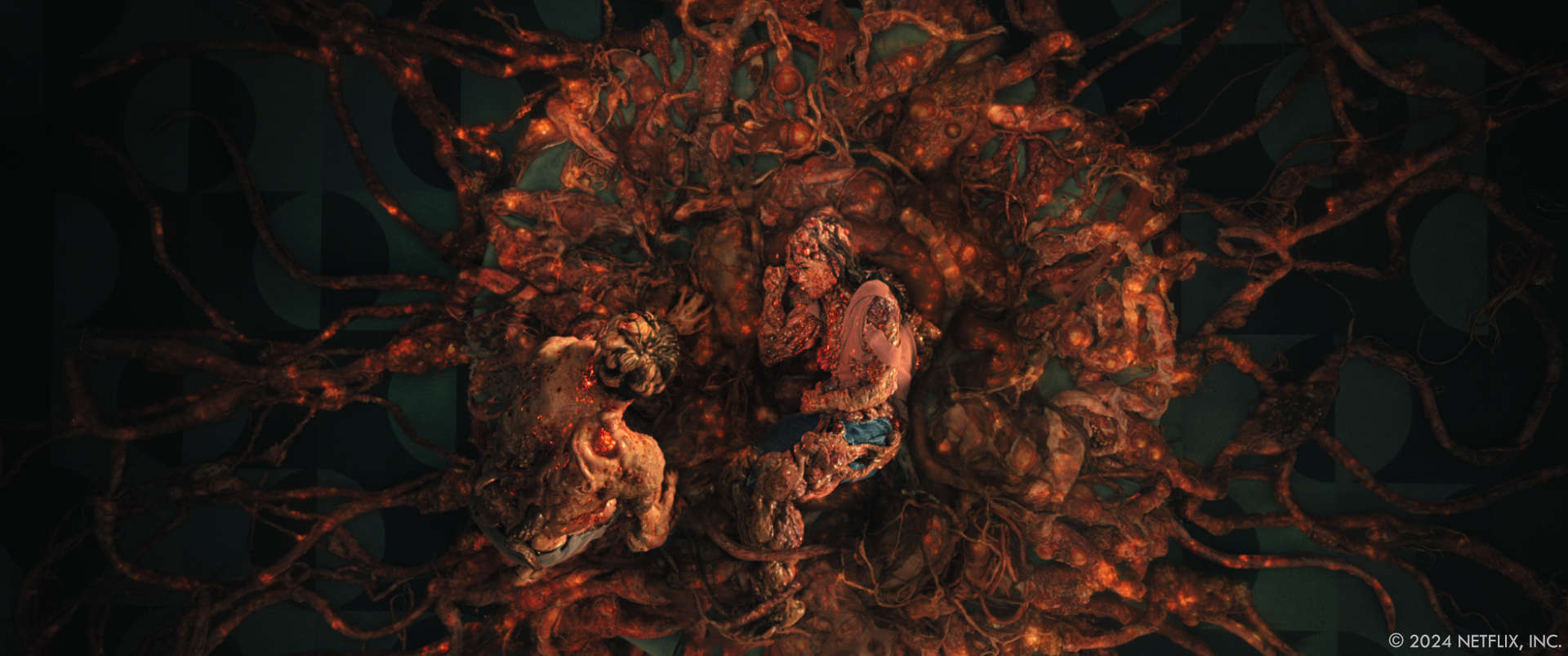
How did the team approach maintaining consistency in visual effects across all seasons?
We really maintained great relationship with the same VFX companies from season 01. That gave us a great sense of continuity across all the seasons. We made sure that everybody was working together, and that various assets and scripts could be shared across all of the VFX companies.
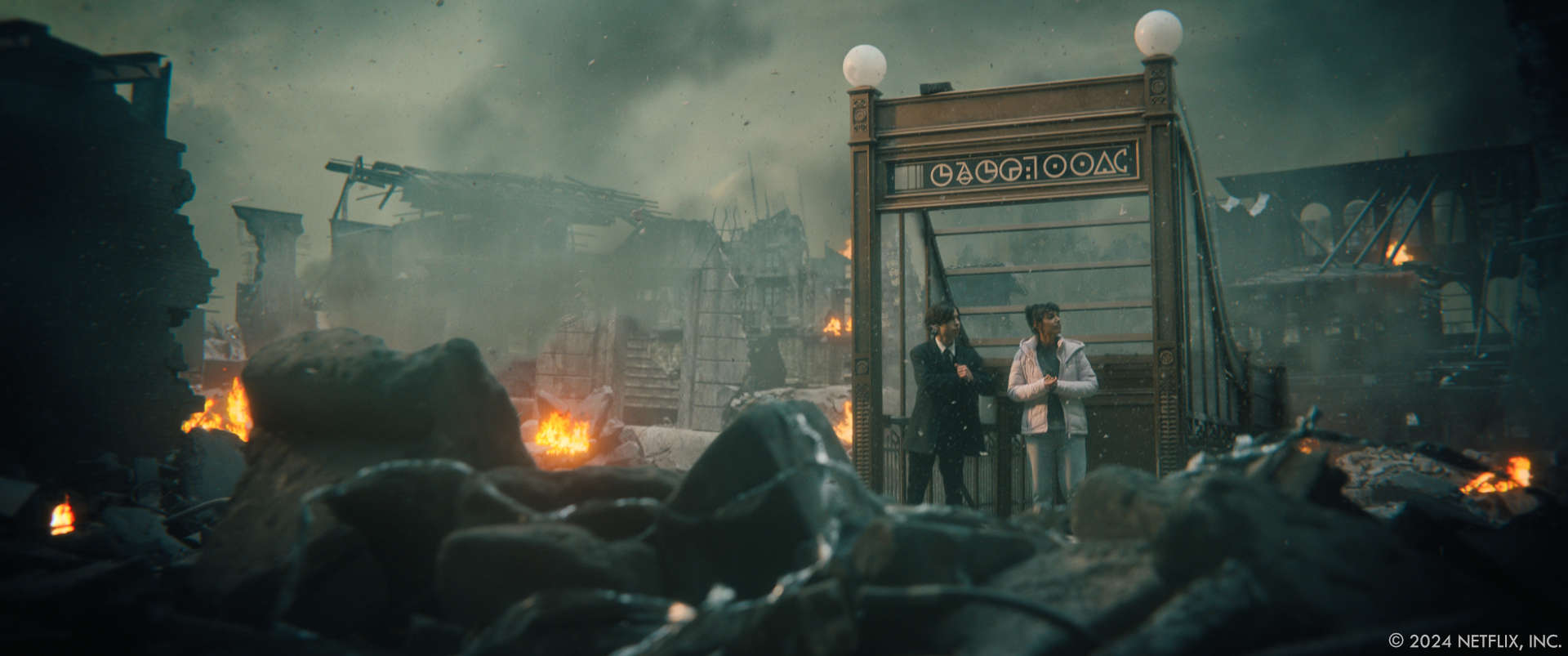
What new technologies or techniques were used in the final season that weren’t available before?
The new A.I. design tools for concept art and texture ideas. A.I. is an incredible tool to help generate unusual, and bizarre looks. Things I don’t think we would have explored without these new and exciting digital thinking tools.
How did the VFX team collaborate with other departments to achieve the final look of the VFX?
Communication and an open-door policy are a must with such a complicated production as The Umbrella Academy. I know this sounds boring, but lots and lots of meetings in the studio meeting room kept us all up to date. Allowed the various departments to make comments on huge action scenes and stunts. Safety is the first concern for the cast a crew and we all focus on that. Then let the creative and technical challenges flow.
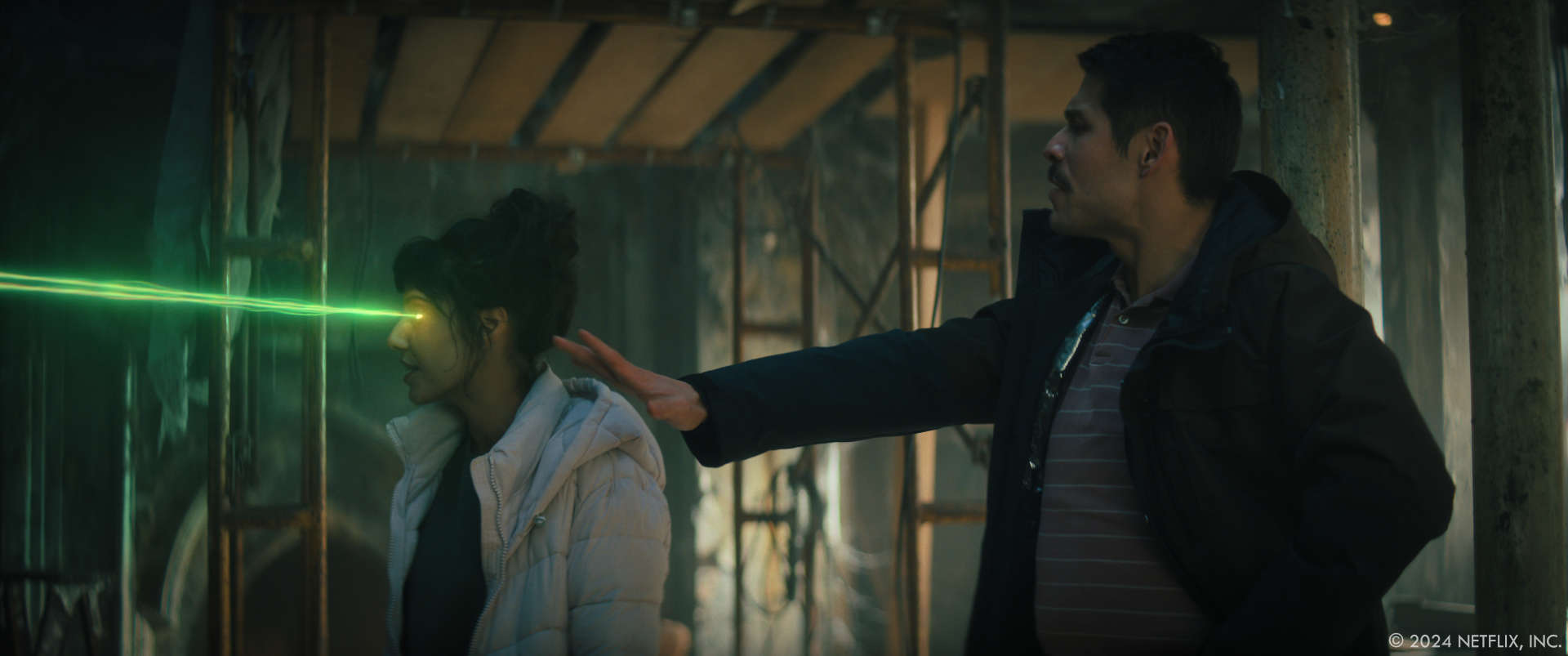
Can you discuss the creative process behind the most challenging scene in the final season?
The various Ben and Jennifer stages of infection became a challenge both in script form and during production. The initial thought was to rely heavily on make-up effects. But that became clear very quickly that time was not on our side. We used FOLKS VFX exclusively to work on concept art of what we nicknamed “Bennifer”. The merged version of Ben and Jennifer after they have both been infected by the cleanse. This was done by blocking out various model shapes based on the scans of our actors. These various shapes and ideas were put in from of our production team. But the design process never ended at production. Because Ben and Jennifer and the Cleanse Monster were always going to be fully CG. The design process and look development never really ended until that last month of post-production. Constant tweaks and adjustments were made to the CG characters literally into the final D.I. with separate mattes to help enhance various aspects of the creatures. Doing what I always promise myself never to do. Turn the D.I. sessions into a compositing session.
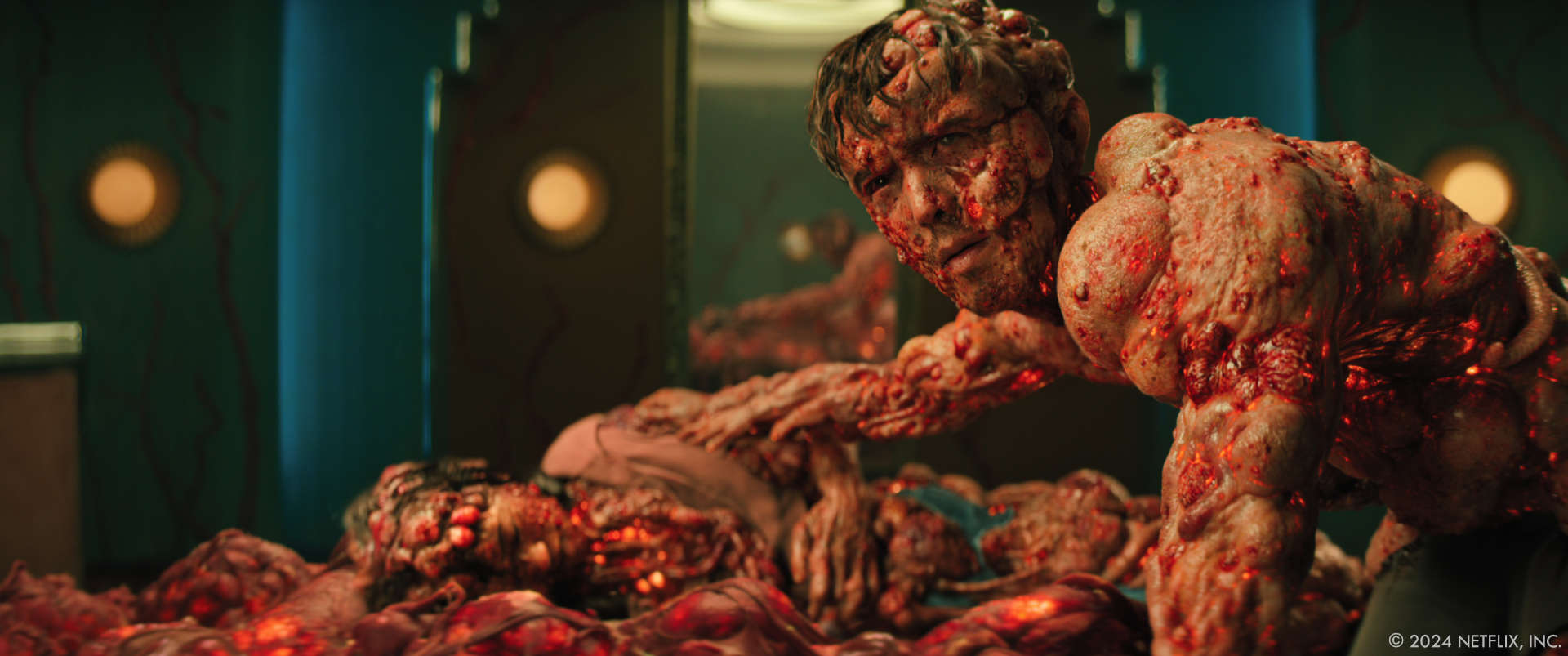
Can you describe the process of designing the impressive creature in the final episode?
The final creature was such a complicated character with its strange shapes that were always changing and moving in odd ways. It looked different from the various camera angles with its liquid-like surface and tentacles. It had an internal glowing of Durango inside of it plus tons of blend shapes and morph targets. The design really changes in almost every shot as it grows bigger and bigger. It eventually settles down in terms of design after it breaks out of the department store, and we get to see it attack the followers and the special forces team outside on the street. It finally lands on what I call in a loving tribute, the “Rancor-Deluxe”.
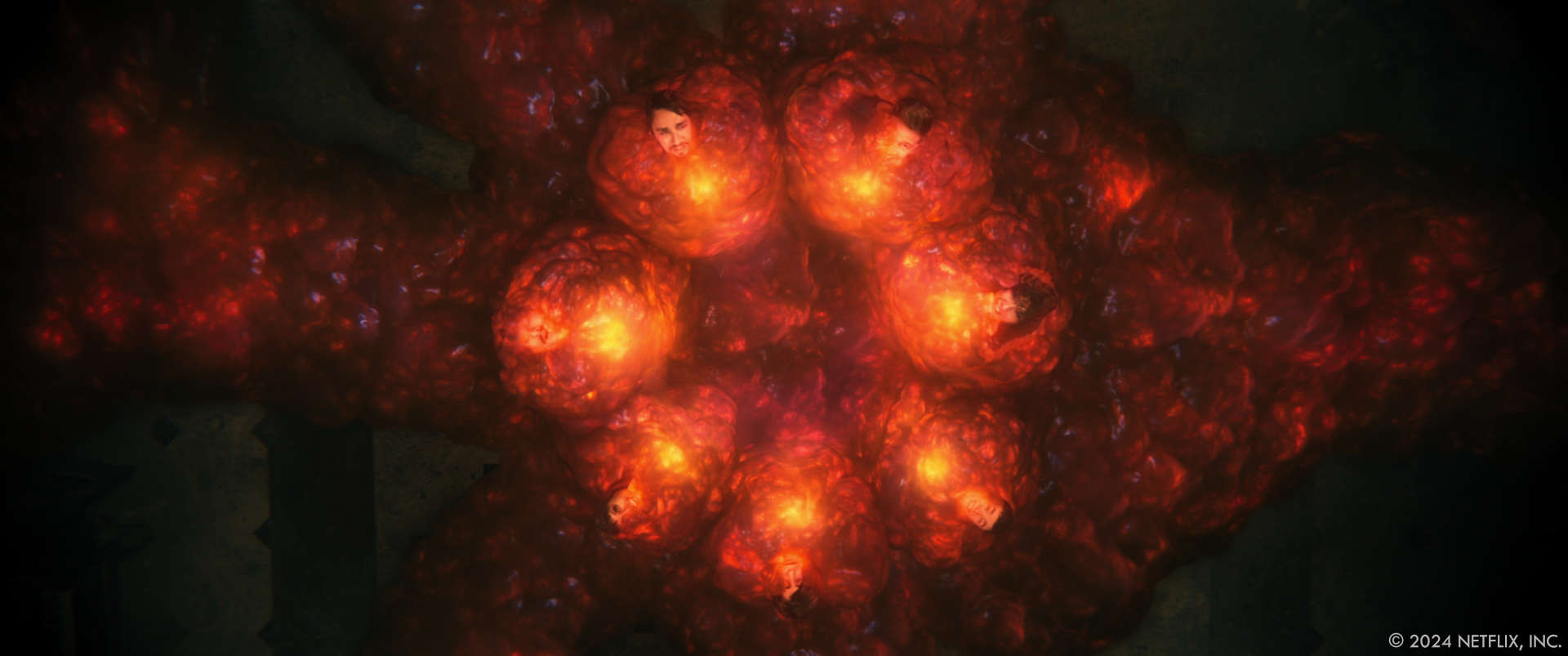
How did the design of the creature evolve from initial concept to final execution?
We must have gone through 30 to 40 versions before we landed on a version that ends up in the final episode.
What were some of the key inspirations for the creature’s design in the last episode?
We wanted it to be scary and gross as it had so much to do with the story. We looked at strange plants and fatty tumors, weird algae and lava forms. It had to be unique, but a huge inspiration was the final creature in the anime classic “Akira”.
What was your favorite VFX sequence to work on in the last season, and why?
The motion control shot of Five walking into the deli and seeing 28 versions of himself. That was such an important moment in the script, as all is revealed to the audience by one of the Five’s in the deli. It had to be seamless, and the camera blocking, tech-vis and our actor’s performance had to be planned down to the inch. It was a stressful day, but super rewarding in the end.
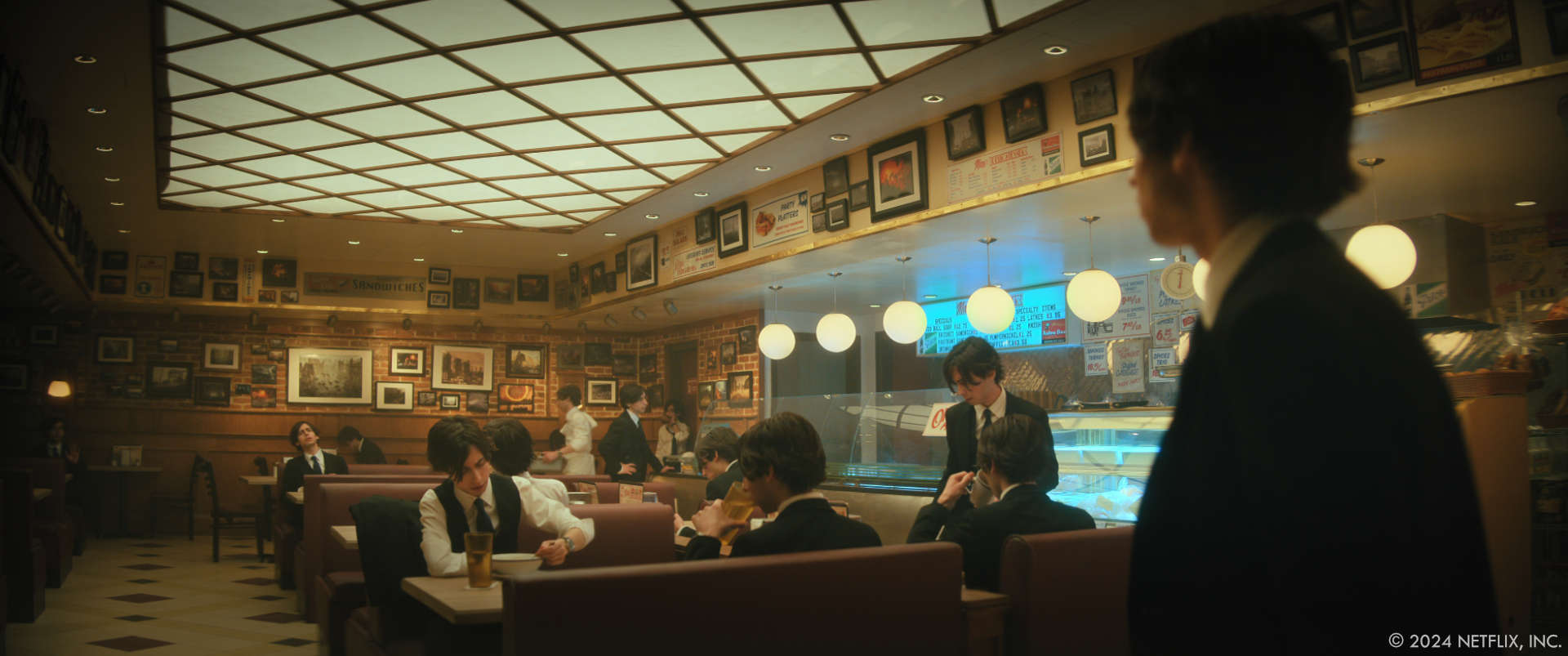
Were there any unexpected obstacles during production, and how did you overcome them?
The height of the final creature ended up being so tall that we had to bring in a special lifting device. We mounted a giant inflatable chrome ball at the top and bottom. This helped the cast and camera crew for eyeline and general placement out in the street.
How do you balance practical effects with CGI to achieve realism?
We always give practical effects first crack at any onset or location effects. But as I mentioned before, time was not on our side. If there is no time to prep bullet holes on a car, we will add them in later but at least we have spark hits and dust hits on set, that helps the actors and generates a sense of dynamics and action on set.
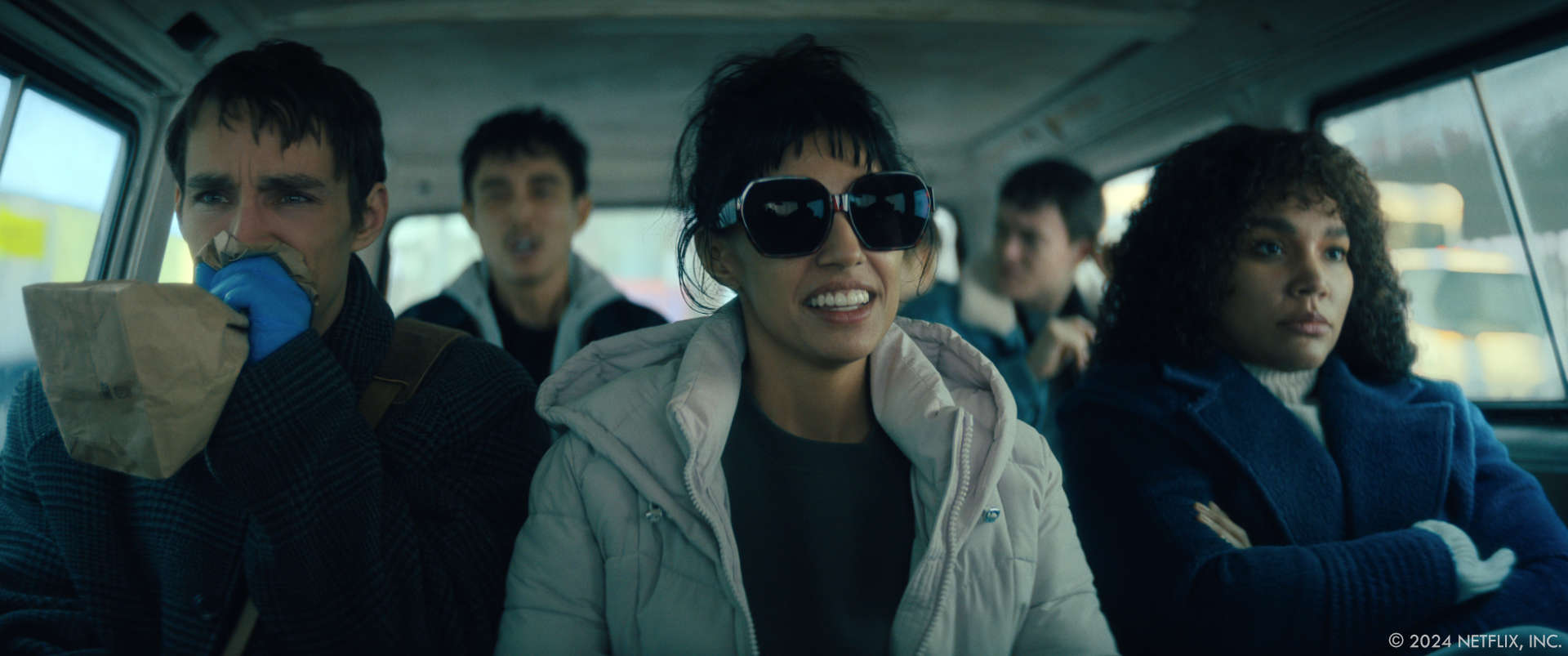
How has audience feedback influenced the development of visual effects over the series?
The fans have always been very supportive of each season, but I think we are internally hard on ourselves to make the VFX better every season.
Can you share any memorable anecdotes from working on the final season?
Brining Pogo back for a flashback scene was my idea that I pitched to our showrunner, Steve Blackman. Pogo is such an important character that I pushed hard to sneak him in at some point. The episode 04 cold open was perfect and my idea was approved. I’m very proud of that bit and I think the fans will be excited to see for the first time the “Minerva” flying vehicle from the original comics appear in all its glory.
Can you discuss any particular scene that required innovative problem-solving?
The ghost dog named Thunderbolt inside the coffin with Klaus required a special device and shape with led lights on it that could be puppeteered by our onset VFX Supervisor, Dave Axford. The led lights had to change color, and the rig had to move in a very specific way so the actor playing Klaus (Robert Sheehan) could perform with it, inside a coffin.
What is a lesser-known visual effect from the series that you’re particularly proud of?
The subway station set extensions are very subtle but really helped create and sense of scale and depth that the subway station required. I think those shots are seamless.
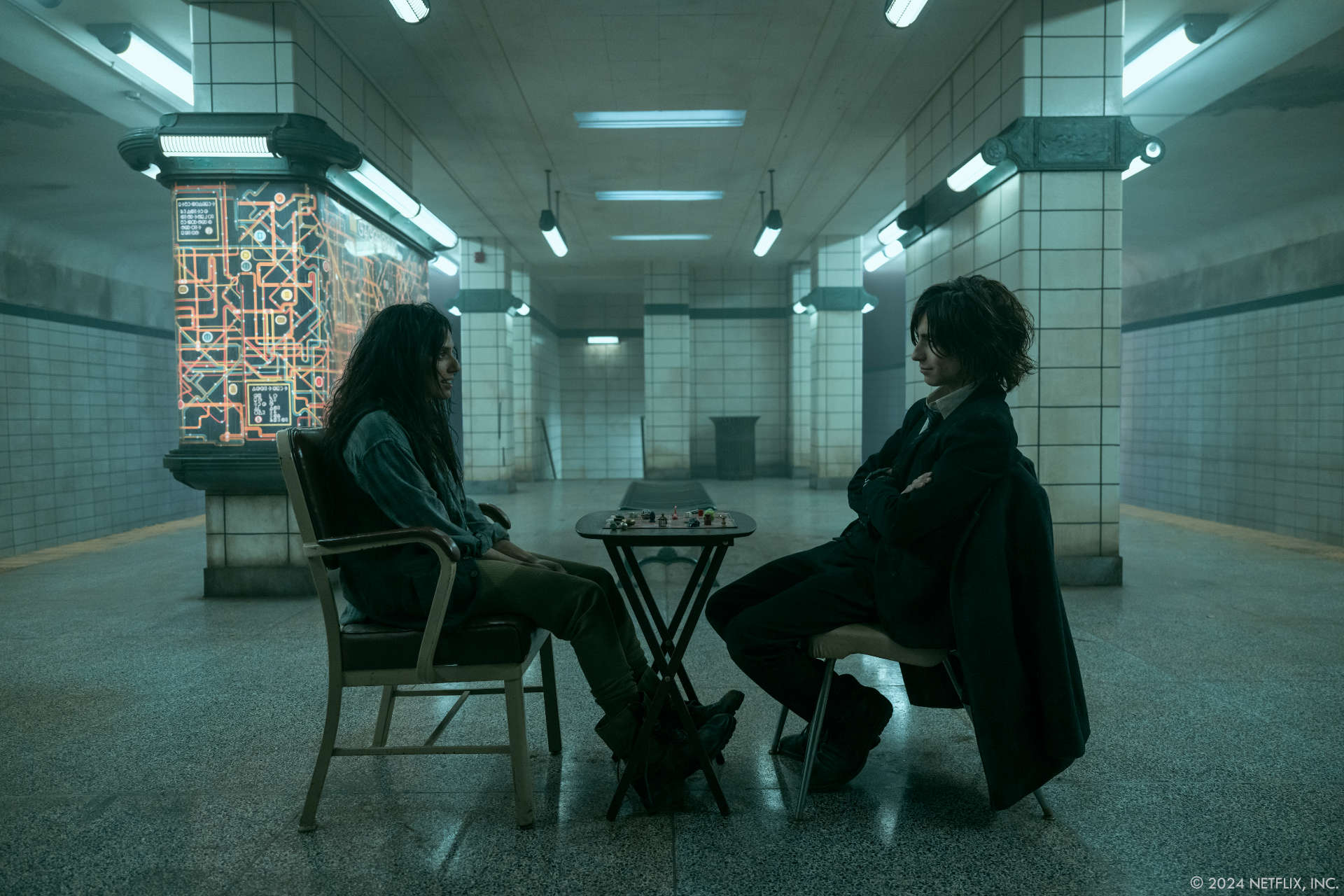
How did the team ensure seamless integration of VFX with live-action footage?
Our on-set VFX team goes to great lengths to capture Chrome Ball, Grey Ball, HDRI, Witness Cameras and a huge amount of reference photography of every set and location. Then giving all the data to each VFX company ensures that they can seamlessly integrate their VFX into any scene.
Did you have to create any new techniques or effects specifically for the final season?
Each of the superpowers had to be tweaked to match the storyline of the tainted marigold they drank in episode 01. All the assets for the powers had to be modified to make them grungier. Five’s blinks have a reddish tone with more texture. Lila’s laser eyes are green to give them a sickly look. Viktor’s powers are based on rage and emotion and not sound. Ben’s tentacles have more slime and texture. Allison’s powers are more telekinetic with a touch of Marigold in her eyes.
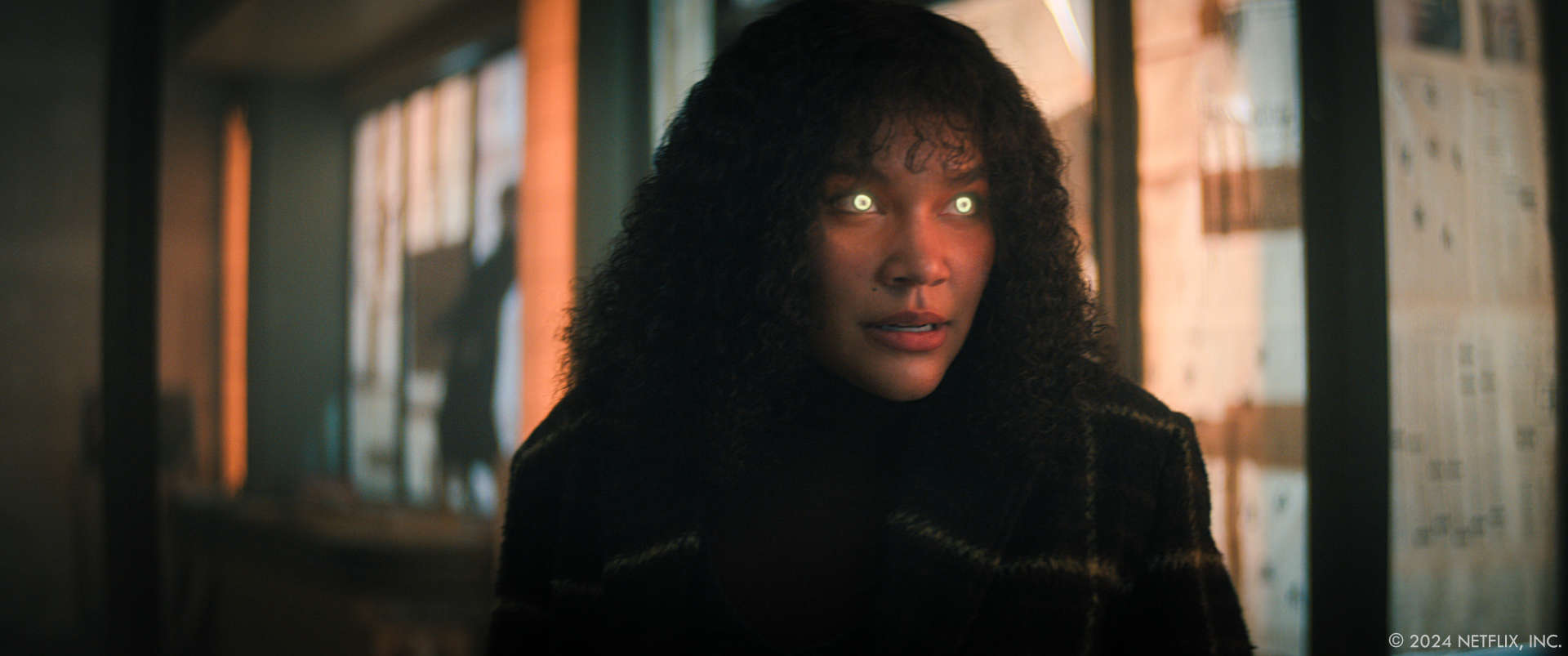
Were there any unexpected technical or creative challenges encountered during the production?
For episode 02 the holiday village attack on the family was a huge undertaking in the middle of winter. Shooting was spread over 2 weeks and the weather was unpredictable. I knew that in post we were going to have to dig into heavy sky replacements and color correction to help the scene for general weather continuity. A very difficult scene to shoot with all kinds of practical effects and stunts going on.
Were there any memorable moments or scenes from the series that you found particularly rewarding or challenging to work on from a visual effects standpoint?
When Ben attacks the farm where Gene and Jean have Jennifer held prisoner in the barn. All of that scene was made up in post-production. Ben in full tentacle mode and his victims were all CG. SPIN VFX did an amazing job. I am still blown away we pulled it off with the footage we had to find and stitch together.
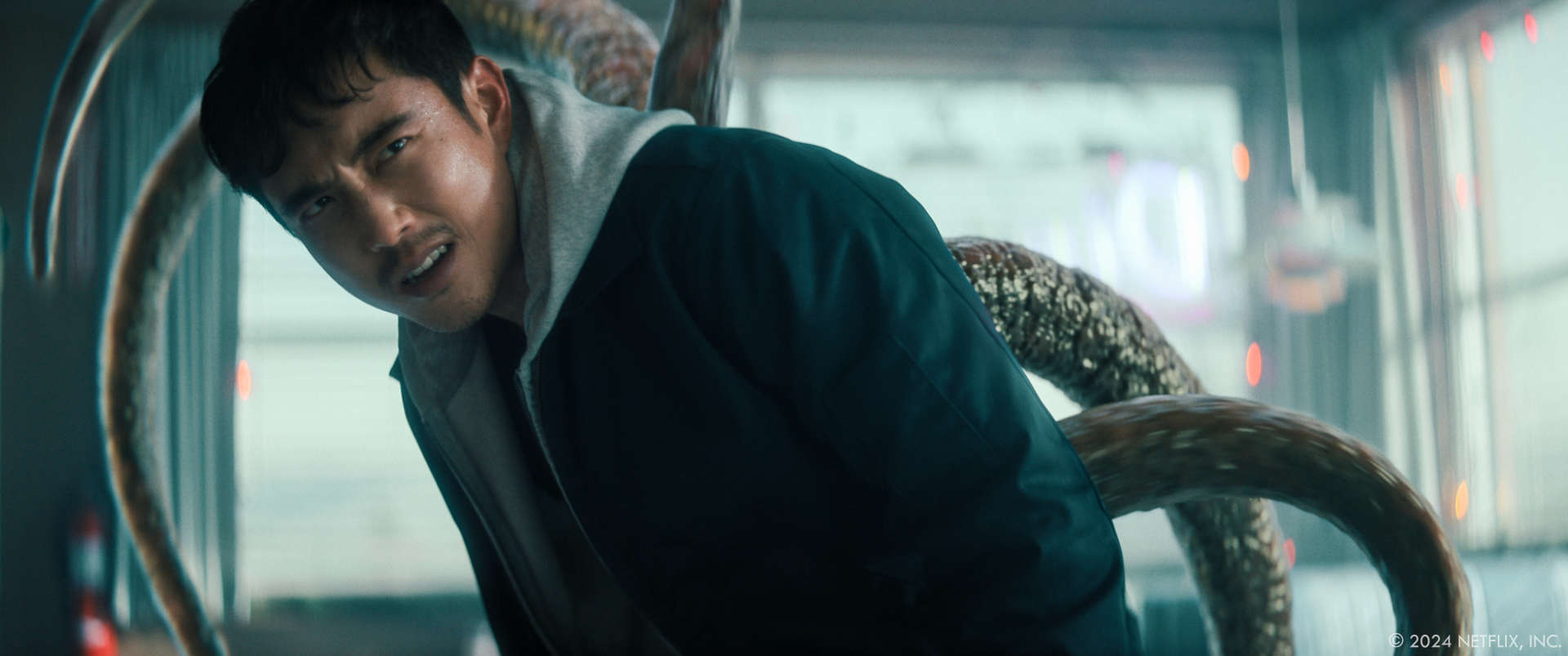
Looking back on the project, what aspects of the visual effects are you most proud of?
The subtle set extensions, the new superpowers, bringing Pogo back, but the final episode with Ben and Jennifer becoming the “Cleanse Monster.” It was truly an epic journey to bring that to life. But the ghost dog “Thunderbolt” pissing on his own grave at the end of that episode, still makes me laugh every time I see it.
What are your fondest memories of working as a VFX supervisor on The Umbrella Academy?
Working with such an amazing team that became my 2nd family in Toronto. Getting the chance to direct has always been a dream of mine, very proud of that. But I think that it was the collaboration with everybody and the goal of making something special that will last for years to come.
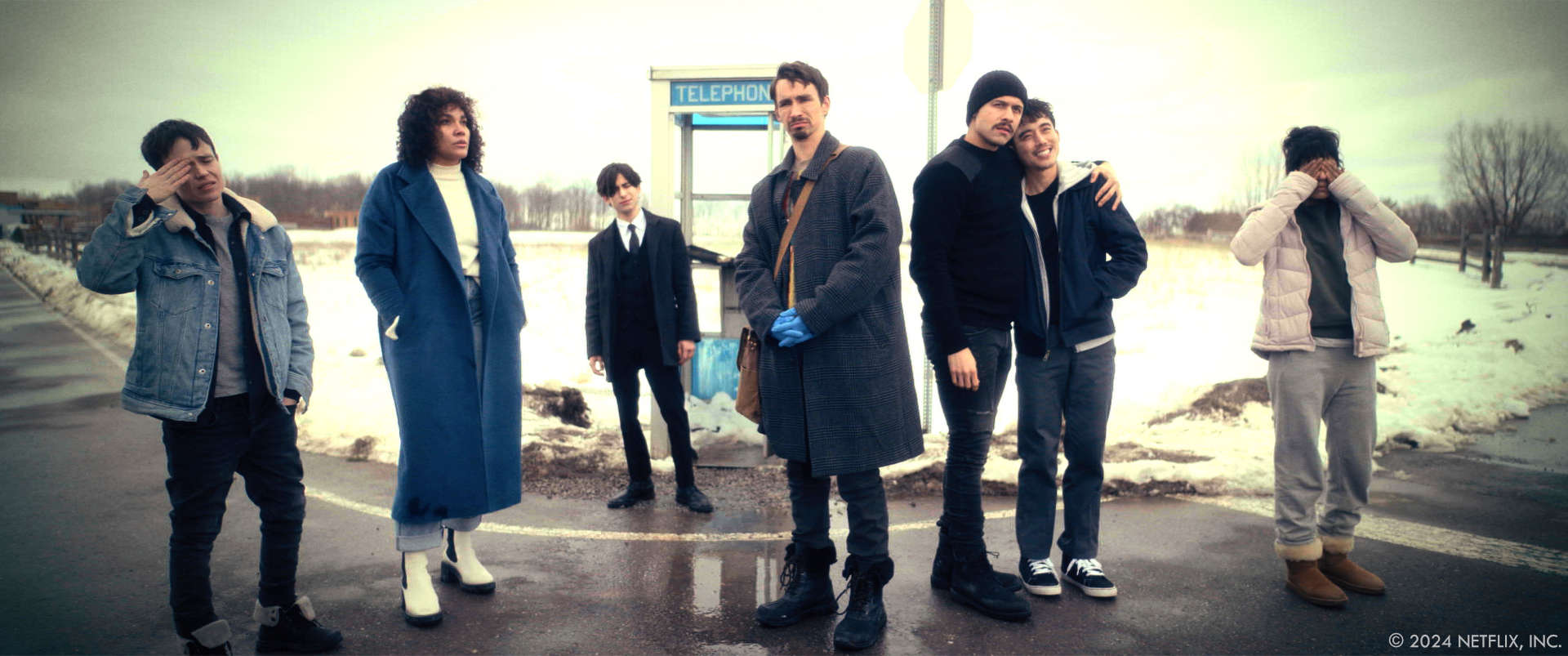
How long have you worked on this show?
Since October of 2017, 6 years.
What’s the VFX shots count?
1500 .
What is your next project?
That is TOP SECRET……
A big thanks for your time.
© Vincent Frei – The Art of VFX – 2024




